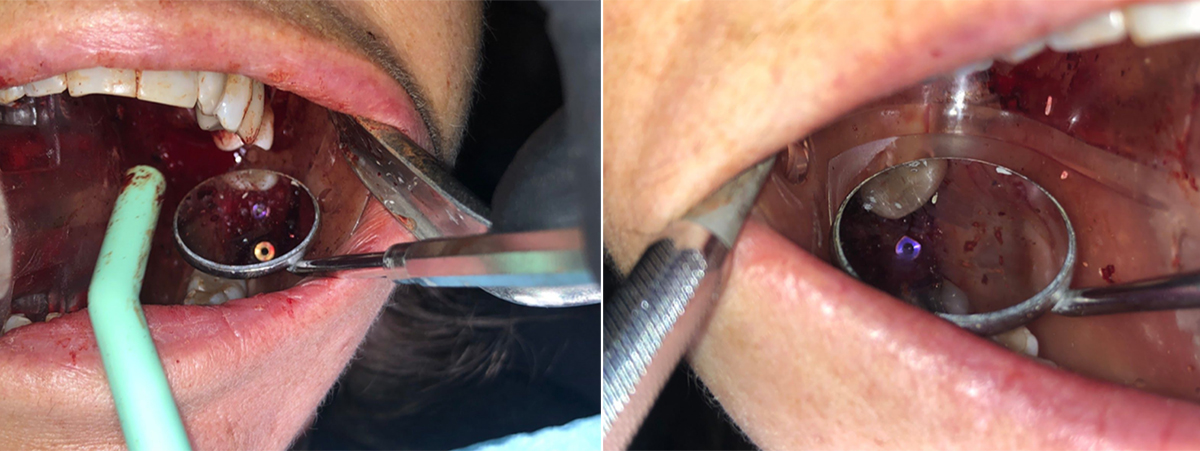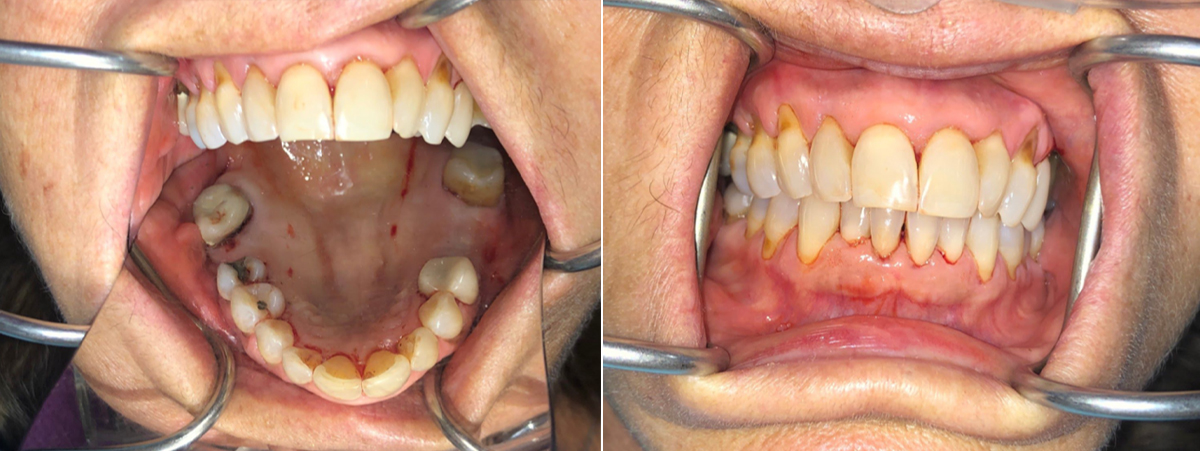By Maneet Dharia, DDS
A female patient, age 68, had a gap in her smile due to missing teeth, and she wanted to have it addressed, mainly for cosmetic reasons. Though she had wanted for some time to have the missing teeth replaced with dental implants, fear of dental work was a concern. She also had a desire to minimize the time needed in the dental chair for the extensive surgical and restorative work needed to fix her issue.
She came to her provider with a CBCT and FMX. After speaking with her dentist, she was comfortable knowing she could be treated with sedation dentistry.
The patient was healthy, only experiencing occasional muscle pain, with medications limited to over-the-counter calcium and magnesium supplements. She was ASA class II, due to a habit of smoking cigarettes and recreational marijuana. The patient was relatively fit with a BMI of 22.31.
The patient's Mallampati score was II; she had caries and multiple abfractions due to bruxism and multiple missing teeth, along with sinus pneumatization. Horizontal bone loss secondary to tooth loss was present in the posterior region. She had high cosmetic concerns, but wished to address her work little by little. She had been diagnosed with mild, chronic, generalized periodontitis and wished to have her teeth cleaned prior to having her implants placed during the sedation visit.
A treatment plan was devised to address her needs, including IV sedation after oral sedation to prolong sedation in a safe manner, and the patient was given a pre-sedation consultation. All preoperative and postoperative instructions were given to the patient and her companion. The companion agreed to care for the patient for 24 hours following treatment and ensure she followed instructions and took the prescribed medications, including postoperative pain medication.

The patient appeared very nervous when she arrived, but followed all the instructions given her. Her blood sugar was 88mg/dl—safe to sedate, but had it been any higher, she would have been suspected of being non-NPO or a diabetic.
In the office, the patient was given oral sedatives before the appointment began. Then an IV was established, and the patient was given diazepam and midazolam as needed via titration to achieve a smooth and comfortable moderate conscious sedation.
The patient was in a state of moderate sedation; she slept naturally but would wake easily and respond appropriately when the dentist moved her or attempted to get her attention. The treatment went smoothly and she recovered well after treatment. She had scaling and root planing completed by the dental hygienist and 3 dental implants placed by the dentist. She completed her sedation discharge test and was deemed stable to leave.
The patient was very happy to be sedated and opted for a second sedation to extract teeth and perform restorative work. She even indicated that she wished to be sedated for all future dental work because she enjoyed the experience so much.
The patient is mostly restored. She plans to undergo another appointment when possible to repair the abfractions that she has put off. However she is much happier with a dental implant placed and not having a gap in the corner of her mouth when she smiles.

The patient was seen two weeks later for suture removal, and was very happy at how anxiety-free the appointment had been. She barely remembered the experience due to the anterograde amnesia effects of the medication.
The patient communicated that she looks forward to the next time she comes in for dental treatment.

Maneet Dharia, DDS
Maneet Dharia, DDS is a Los Angeles dentist focused on the prevention of dental problems and educating patients and their families. He received a B.S. in Nutritional Sciences from Michigan State University, and graduated dental school at the University of Michigan. His continuing education studies include IV and Oral Sedation, UCLA Dental Implant Continuum, Cosmetic Fillings, Root canals and Crowns, Sleep Apnea Treatment, Oral Surgery and Tooth Removal including third molars, Invisalign Orthodontics. This article is part of his DOCS Education Fellowship program.
References
- Salzman C, Shader RI,Greenblatt DJ, Harmatz JS.Long v ShortHalf-life Benzodiazepinesin the Elderly: Kinetics and Clinical Effects of Diazepam and Oxazepam. Arch Gen Psychiatry. 1983;40(3):293–297. doi:10.1001/archpsyc.1983.01790030063008
- Malamed SF, Nikchevich DJr, Block J. Anterograde amnesia as a possible postoperative complication of Midazolam as an agent for intravenous conscious sedation. Anesth Prog. 1988;35(4):160-162.
- Appukuttan DP. Strategies to manage patients with dental anxiety and dentalphobia: literature review. Clin Cosmet Investig Dent. 2016;8:35-50. Published 2016 Mar 10. doi:10.2147/CCIDE.S63626




